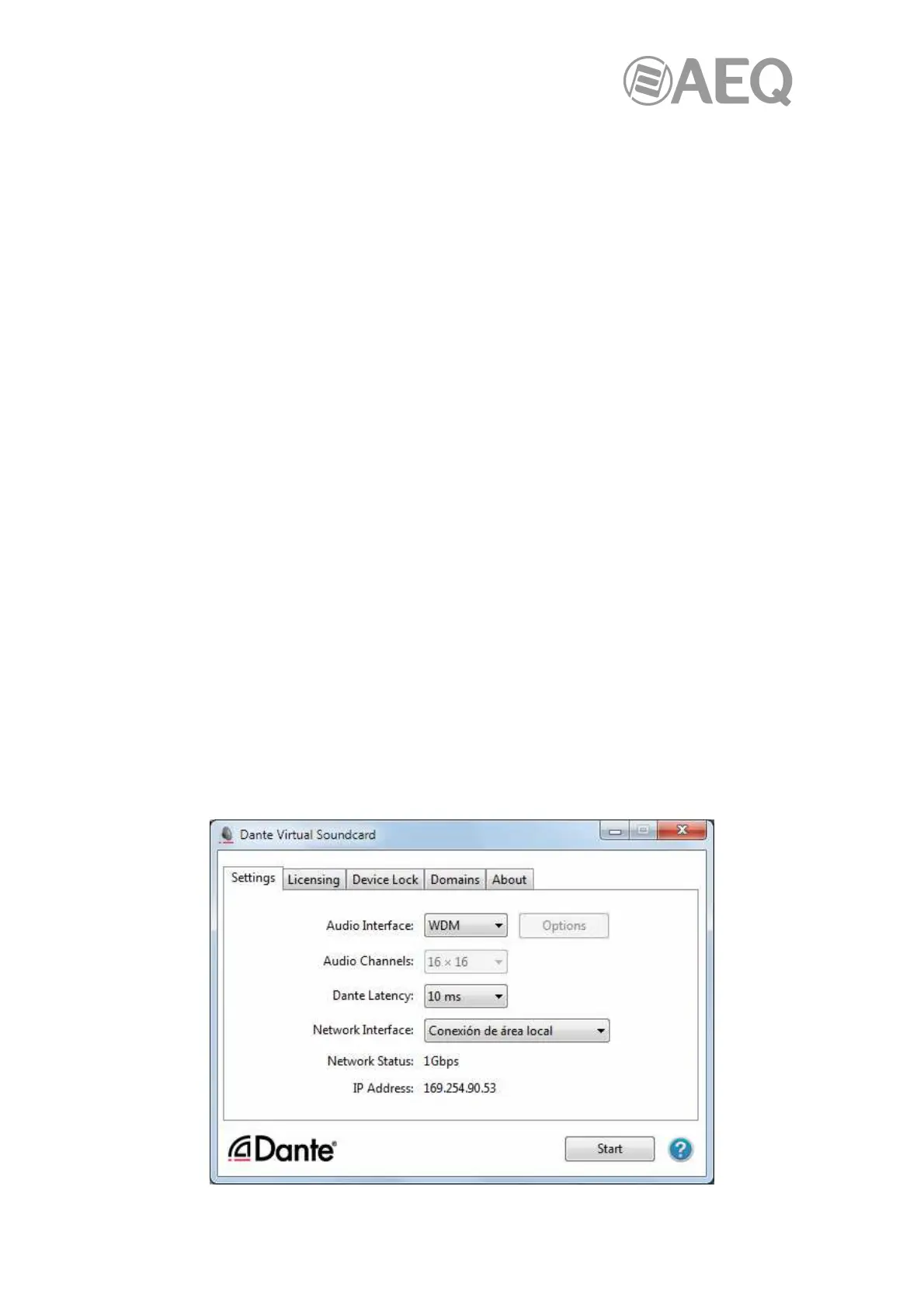AEQ Audio Over IP
Routing System
85
5. CONTROL TERMINAL. "DANTE Virtual Soundcard".
NOTE: The information included in this manual is valid for software version 4.0.3.1 (or higher
versions).
Any computer with the "Dante Virtual Soundcard" software installed will be able to send and
receive channels to and from the AEQ consoles and matrices. There are trial and fully operating
versions of this software that can be downloaded free of charge from www.audinate.com.
Registered users can also download the user manual from this page. Nevertheless, for your
convenience we reproduce an extract from it here.
"Dante Virtual Soundcard" is a software application complementary to "Dante Controller", as it
adds monitoring capabilities. The scope of this document is to describe the utility of "Dante
Virtual Soundcard" as a tool allowing the insertion of a couple of channels as a test audio or to
extract them as a monitor in a Dante based AEQ AoIP network, using a PC. For its use as multi-
track software, please refer to the full manual.
IMPORTANT NOTE: "Dante Virtual Soundcard" does not support redundant operation.
Minimum System Requirements:
• Processor: Dual core CPU
• Memory: 1 Gigabyte of RAM
• Network: Standard wired Ethernet (WiFi not supported) network interface (100Mbps or
Gigabit). A Gigabit (1000Mbps) interface is required for channel counts above 32x32
@48kHz., although the PC may have a 100 Mbps interface.
• Windows 7 (SP1), 8.1 or 10, Server 2012 R2, operating systems, with the latest
available version and updates installed. Windows Drivers System drivers must be of the
performance standard expected by the Windows Logo Program.
NOTE: Both UTF-8 and Unicode are supported EXCEPT for host or device names;
DNS standard does not support Unicode for these.
The PC audio application must be compatible with WDM (Windows Driver Model). The
application supports the ASIO multichannel standard interface, but this is not the purpose of the
use that this document describes.
Its default screen must be configured this way. Note that the configured latency, even not
audible, is by far higher than the one normally produced by AoIP AEQ devices, due to the lower
performance of a general purpose PC hardware as compared to dedicated audio hardware:
